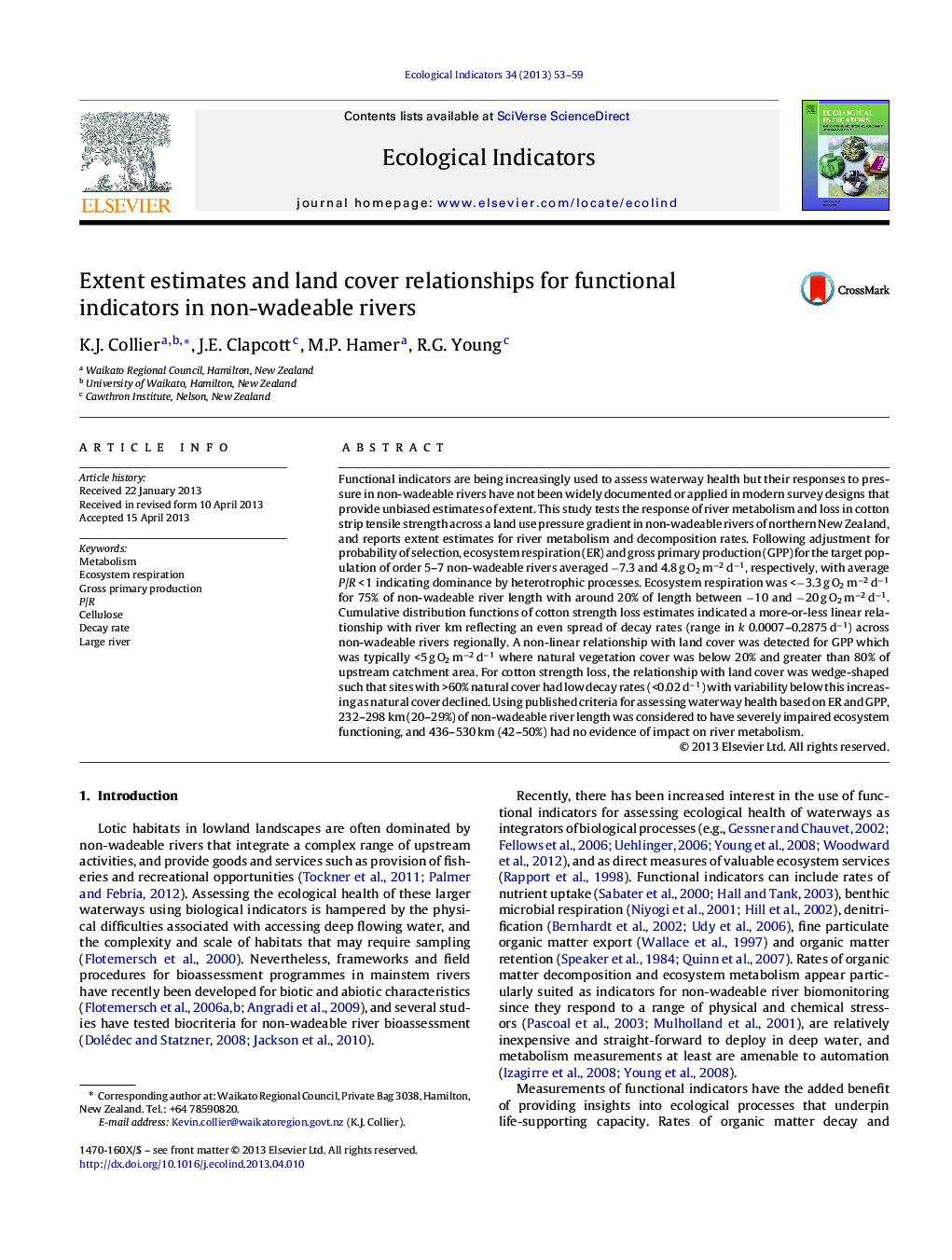| Article ID | Journal | Published Year | Pages | File Type |
|---|---|---|---|---|
| 6295233 | Ecological Indicators | 2013 | 7 Pages |
Abstract
Functional indicators are being increasingly used to assess waterway health but their responses to pressure in non-wadeable rivers have not been widely documented or applied in modern survey designs that provide unbiased estimates of extent. This study tests the response of river metabolism and loss in cotton strip tensile strength across a land use pressure gradient in non-wadeable rivers of northern New Zealand, and reports extent estimates for river metabolism and decomposition rates. Following adjustment for probability of selection, ecosystem respiration (ER) and gross primary production (GPP) for the target population of order 5-7 non-wadeable rivers averaged â7.3 and 4.8 g O2 mâ2 dâ1, respectively, with average P/R < 1 indicating dominance by heterotrophic processes. Ecosystem respiration was <â3.3 g O2 mâ2 dâ1 for 75% of non-wadeable river length with around 20% of length between â10 and â20 g O2 mâ2 dâ1. Cumulative distribution functions of cotton strength loss estimates indicated a more-or-less linear relationship with river km reflecting an even spread of decay rates (range in k 0.0007-0.2875 dâ1) across non-wadeable rivers regionally. A non-linear relationship with land cover was detected for GPP which was typically <5 g O2 mâ2 dâ1 where natural vegetation cover was below 20% and greater than 80% of upstream catchment area. For cotton strength loss, the relationship with land cover was wedge-shaped such that sites with >60% natural cover had low decay rates (<0.02 dâ1) with variability below this increasing as natural cover declined. Using published criteria for assessing waterway health based on ER and GPP, 232-298 km (20-29%) of non-wadeable river length was considered to have severely impaired ecosystem functioning, and 436-530 km (42-50%) had no evidence of impact on river metabolism.
Related Topics
Life Sciences
Agricultural and Biological Sciences
Ecology, Evolution, Behavior and Systematics
Authors
K.J. Collier, J.E. Clapcott, M.P. Hamer, R.G. Young,
